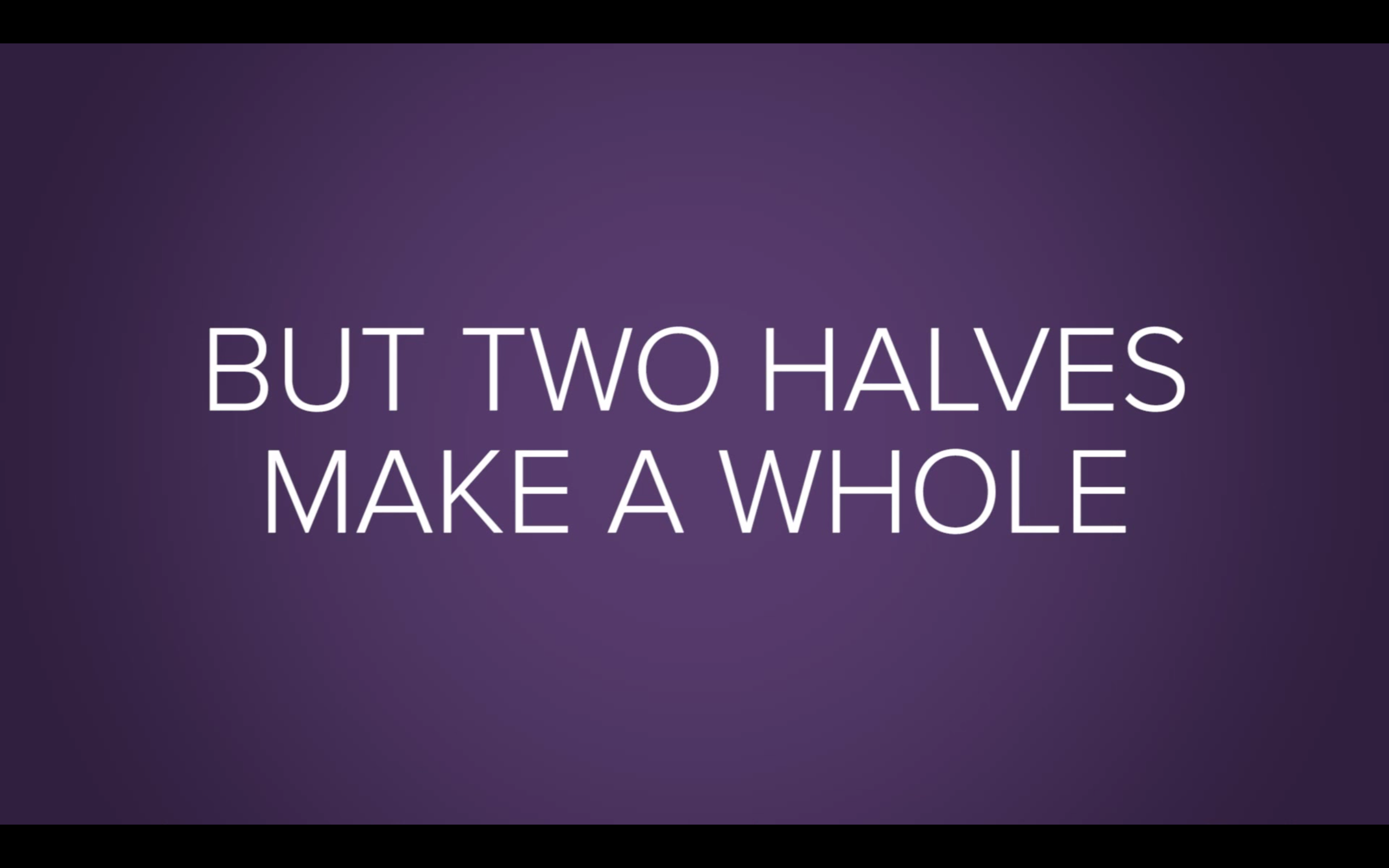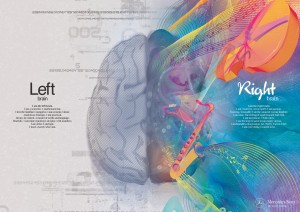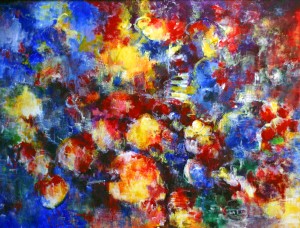Hemispheric Dominance
Allison and Sara are two friends with very different ways of viewing the world around them. The video above, a product of Buzzfeed, describes their perspectives in terms of being “Left” and “Right” brained. While entertaining at times, the video showcases import features of how the media tends to misinterpret neuroscience particularly within hemispheric dominance. Below, we examine different aspects of that supposed dominance including style, food, dating, mathematics, and memory. Are Allison and Sara really right and left brained, or are there differences due to other factors? Keep reading to find out!



The right brained Sara is more focused on style (cats!) when getting dressed then any practical reason. Allison is all about the practicality of her outfit in the weather. In media, this relationship is extrapolated to include all forms of art and artistic expression as falling under the right hemisphere.
(Keier, Retrieved from: http://www.andrewkeir.com/right-brain-vs-left-brain)
Right brain individuals are always looking for alternative ways to interpret visuals. Left brain individuals typically observes their surroundings and accept it at face value.
For example, take the two different paintings. The first painting is abstract and attracts the right brain because there’s room for interpretations. The painting of the ship sailing at sea attracts the left brain because there is order to the picture and it’s a concrete object.
Retrieved from: http://www.rainbow-paintings.com/products_info/Warship-11-boat-painting–sea-and-boat-painting-111272.html
However, it’s possible, and common, for left-brained dominant individuals to think of abstract art as appealing, just as is it for the right-brained to find an interest into more concrete images. The only difference is that the two types of people will have to work their minds in different ways to find the details of the art that they admire.
At lunch time, Allison meticulously calculates the nutritional value of her clementines while Sara is experimenting with the flavors of her chips. A food blogger suggests that, “Left brain thinkers rely more on science in food selection and think of calorie counting, nutrients, weight and volume of food, and nutritional theories when making food choices while right brain thinkers rely more on senses in food selection and focus on tastes, colors, aromas, and textures of food as well as how food makes them feel when making food choices.” (Culinary Explored, 2012) This stereotype, of left brain thinkers making choices based on logic and right brains based on feelings, holds true in Allison and Sara’s lunch experiences. However, it is quite a stretch to imagine that the left and right hemispheres function independently with food choice. In reality, the hemispheres function together both in terms of food choice and consumption. When you’re at the grocery store, you don’t simply pick products based on nutritional value, you also pay attention to taste, texture, and smell. Eating is a sensory experience that involves both hemispheres constantly communicating to incorporate both the fine motor movements required to consume and the sights and smells of cuisine.
In the video when a friend is clearly upset about something the left-brained friend, Allison, does not pick up on her emotions or offer support. Where as the right brain friend, Sara, notices and prompts her friend to open up to her. This example follows from Jules Bernard Luys’s proposal of an “emotion” center in the right hemisphere based off of his research on personality differences he observed in patients suffering from hemiplegia. He found that patients with right hemiplegia were more passive and apathetic while patients suffering from left hemiplegia were emotionally volatile (Harrigton, 1995). This theory suggests that the right hemisphere is dominant over the left for all forms of emotional expression and perception. However, this evidence and the example from the video suggesting that the right hemisphere alone is responsible for emotion and intuition is oversimplified. There is evidence that emotion may be lateralized to both hemispheres. Several studies have found that the left hemisphere is more active during positive emotions while the right hemisphere is more active during negative emotions. Davidson (1992) used an EEG to measure cortical activity of 10-month-old infants as they watched video segments of an actress spontaneously making happy or sad expressions. Greater activity in the left frontal region was recorded when the actress’s expressions were happy while greater activity in the right frontal regions occurred when her expressions were sad. These findings support the theory that the left hemisphere is involved in perceiving positive emotions and the right is involved in perceiving negative emotions. While there is stronger evidence for right hemisphere involvement of perception of emotion, the left hemisphere does indeed have a role in expressing and experiencing emotion. Therefore while right brain dominant individuals may be more adept at perceiving emotions, the left hemisphere is also involved when it comes to emotion.
Traditional theories of hemispheric dominance suggest that men are predominantly left brained, meaning, their cognitive style tends to focus on problems and solutions with a logical perspective. Women, by contrast are predominantly left brained, focusing on communication and emotion in their daily interactions. Per this theory, it can be hypothesized that the clash of these dominances can create problems within dating interactions and relationships (Kuriansky, 1999). The Complete Idiots Guide to Dating outlines this:
In reality, The Complete Idiots Guide to Dating’s account of brain difference in dating behaviors between men and women really can be attributed to gender socialization and norms. It is just as likely for a woman to be socialized to “need to be right” as a result of life experiences or personality traits like neuroticism. Similarly, men can be socialized to “improve things” or enjoy conversation because of personality traits like extroversion. While Allison and Sara are both female, there are still stereotypical depictions of left versus right brains in terms of dating. When speaking of a dating prospect, Allison focuses on specific traits (health history, family, etc) that would correlate to a logical reason of being in love and focuses on remaining in control of the relationship. Meanwhile, Sara conveys holistic feelings about her love life focuses on how it makes her feel. In reality, compatibility is a mix of both right and left brain processes as it is a mixture of both logical traits and holistic emotions.


Allison has a very precise memory of the car in the parking lot while Sara just has a memory of colors. those who rely more on the left side are the individuals that like to work alone and have the information that they need to study put in front of them or provided to them verbally. The students that use the right side of their brain, however, are better at understanding materials that they can study visually. This is why Allison can verbalize so well where the car is and Sara is visual so she remembers colors.
Each side of the brain processes information. The order of the information has a big impact on how well they are able to grasp it. For a left-brained dominant student, they have to have the materials shown to them in an order that is arranged to make some sort of sense, which is unlike the right-brained individual who is able to have various facts provided to them in no specific order and still understand the concepts.
There’s no perfect method for teaching. Some students will have an easier time listening to a teacher’s lecture and taking notes while others will learn more efficiently if they did activities that require movement and participation. Students use both sides of their brains to encode so the other side will be able to adjust and compensate.
When it comes to math, Allison is much more analytical and systematic which makes calculating a tip easy for her, while Sara struggles. Sara is more drawn to the personal connection she had with the waitress- she lets her emotions take over. This is very stereotypical of the media and makes creativity and math seem incompatible. They can be compatible because there are many different types of math problems. Geometry proofs take some creativity because you need to get from point A to B, while solving an equation for x is methodical and logical. Therefore both sides of the brain have different strengths when it comes to math. The left brain is good at reciting multiplication tables, since it’s mostly verbal, and the right side is good at estimating (NPR). The left brain is more part wise processing (like the steps Allison was saying to find the tip) and the right brain is more holistic (Site). If there is damage to either hemisphere there would be difficulties with math (NPR) they just might be different depending on the damaged area. What the video should have shown was two different methods of finding the correct tip, because Sara and Allison can both do math, just might go about it from different perspectives.

Even though some functions might be specialized to an area in either the right or left hemisphere doesn’t mean the other hemisphere isn’t aiding in the process. There is no evidence found that we use either hemisphere more (Chan). Both hemispheres are are active all the time (NPR). When an action like speech is occurring, so many functions must work together (like comprehension and formulation just to name two) that it requires areas from all over your brain. Your brain is really like two best friends that do everything together like Allison and Sara.
Citations:
Are You More Right-Brained Or Left-Brained? (n.d.). Retrieved September 5, 2015.
Chan, A. (n.d.). Right Brain, Left Brain? Scientists Debunk Popular Theory. Retrieved September 5, 2015.
Culinary Explored. (2012, April, 20). Left Brain vs. Right Brain. Retrieved from https://culinaryexplored.wordpress.com/2012/04/20/left-brain-vs-right-brain/
Kuriansky, J. (1999). The complete idiot’s guide to dating (2nd rev. and updated ed.). New York, NY: Alpha Books.
The Truth About The Left Brain / Right Brain Relationship. (n.d.). Retrieved September 5, 2015.
Webdesigner Depot. (2009, November, 16). Understanding Your Brain for Better Design: Left vs. Right from:http://www.webdesignerdepot.com/2009/11/understanding-your-brain-for-better-design-left-vs-right/



